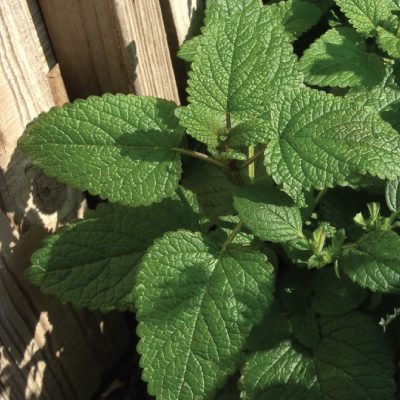
Learning Download: How to Grow Lemon Balm
From Seed to Harvest: A beginner’s guide to growing lemon balm
Lemon balm is a member of the mint family and is a perennial herb, which means it comes back each year. Its leaves look similar to that of a mint plant, but they have a slight lemon smell. Lemon balm also produces small white flowers.
Lemon balm, similar to peppermint and spearmint, can quickly become invasive if not controlled. However, members of the mint family become invasive due to the plant’s roots, whereas lemon balm becomes invasive because if tis seeds. By removing the flowers as soon as they bloom, lemon balm can be controlled. It also is easily controlled if grown in pots. In addition to its edible leaves and nice fragrance, lemon balm will attract bees and other pollinators to the garden.
Lemon balm is usually used in teas, but its leaves can also garnish drinks, be used in cooking or in essential oils.
To plant:
Plant lemon balm after all dangers of frost has assed. The herb can be started indoors six to eight weeks before the last frost and then transplanted into the garden. If planting from seed, barely cover the seeds with soil. When transplanting lemon balm into the garden, choose a spot where the plant will be protected from the harsh midday sun. If planting seeds directly into the garden, loosen the soil with a rake prior to planting. Plant the seeds at least 12 inches apart in rows set 2 feet apart.
To grow:
Prior to germination, water seeds lightly so they don’t wash away. Once the lemon balm has sprouted, continue to water regularly. Thin lemon balm to one plant every 20 to 24 inches apart. Lemon balm responds well to cutting back, so cut the plant back at the end of each season and it will grow back bushier than before. Lemon balm is not a very picky plant and will grow in most soils but prefers a rich, well-drained soil. Lemon balm grows best in full sun or partial shade.
To harvest:
lemon balm is ready to harvest once its leaves reach the desired size. Lemon balm is usually used fresh, as it loses a lot of its scent once it’s dried. Use snips to cut off portions of the lemon balm to use. Leaves can be harvested throughout the summer.
What lemon balm craves:
It is suggested that gardeners don’t fertilize lemon balm very much, as too much fertilizer can cause the herb’s scent to fade. However, since lemon balm is harvested for its leaves, a little bit of fertilizer can encourage more growth. Add a continuous-release fertilizer at the rate the label recommends. You can also amend the soil with compost cottonseed meal or bloodmeal.
Where to buy lemon balm seeds:
You can find lemon balm seeds at Urban Farmer.

